1. Writing and Mailing Handwritten Letters

Once upon a time, a handwritten note was the height of thoughtfulness. Boomers grew up knowing the joy of checking the mailbox and finding a letter written just for them. The act of sitting down with pen and paper required patience, focus, and sincerity—traits that today’s fast communication often overlooks. Younger people, tired of endless texts, are rediscovering the charm of writing things out by hand as a more personal way to connect.
For many, sending a letter now feels almost romantic, like slowing time down for a moment. It’s tangible proof of care in a world of disposable messages. Some Gen Zers have even revived pen-pal clubs and letter exchanges online. The nostalgia for ink and envelopes is really a craving for slower, more meaningful human contact.
2. Sitting Down for Family Dinners

Boomers made a point to gather around the dinner table nearly every night. It wasn’t just about eating—it was about catching up, debating the news, and sharing stories from the day. Studies show that regular family meals can boost emotional well-being and communication skills, especially in kids. These days, with longer work hours and screen distractions, that ritual has become rare.
Younger generations say they miss that sense of daily connection. Many millennials and Gen Z adults now host “family dinner nights” with friends to recreate that communal feeling. There’s comfort in the simple act of passing food and talking face-to-face. It’s a ritual that feels grounding in an otherwise scattered world.
3. Keeping a Physical Photo Album

Before cloud storage and Instagram feeds, photo albums lived on coffee tables and bookshelves. Boomers often spent hours printing, arranging, and labeling their photos, creating a visual diary of family history. There was something sacred about flipping through those pages—each snapshot carried a story you could touch. Now, many of those albums gather dust while digital memories vanish with broken phones or forgotten passwords.
Younger people have started to realize that something gets lost when pictures only exist online. The tactile experience of an album creates a stronger emotional connection. It’s no wonder scrapbooking and printed photo books are having a quiet comeback. Holding a memory just feels different than swiping through it.
4. Reading the Newspaper at Breakfast

For Boomers, mornings often began with coffee and the crackle of a fresh newspaper. It was a moment to pause before the day began—reading, reflecting, and maybe circling something interesting. That daily ritual gave people a sense of connection to their community and the wider world. Now, news comes in an overwhelming, algorithm-driven flood on our phones.
Younger generations miss that slower pace of information. Reading a printed paper—or even a Sunday edition at a café—feels calmer and more deliberate. It’s a break from doomscrolling, offering focus instead of frenzy. The morning paper wasn’t just about news; it was about starting the day with intention.
5. Polishing Shoes and Caring for Clothes

Boomers treated their clothing as investments, not disposable items. Shoe polish kits, sewing boxes, and ironing boards were household essentials. Clothes were mended, not tossed, which reflected pride in personal appearance and resourcefulness. Fast fashion has made that kind of care seem old-fashioned, but it’s quietly returning.
Younger generations, aware of sustainability issues, are rediscovering these skills. Repairing and maintaining clothes isn’t just eco-friendly—it’s empowering. There’s a satisfaction in making something last, especially in a culture obsessed with newness. The old rituals of care are becoming acts of resistance against waste.
6. Using Real China and Tablecloths

Boomers often saved their “good dishes” for Sunday dinners or special occasions. The act of setting a proper table made even ordinary meals feel meaningful. It reflected respect for guests and appreciation for the meal itself. Over time, convenience and casual dining pushed those rituals aside.
Now, younger adults are bringing them back, one dinner party at a time. Many find joy in using real plates and cloth napkins instead of paper ones. It’s about creating beauty and ceremony in small, everyday ways. The return of “tablescaping” on social media shows that we still crave those simple touches of elegance.
7. Displaying Family Heirlooms
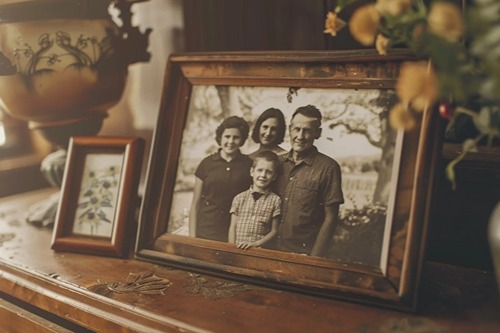
Boomers proudly displayed keepsakes—grandma’s quilt, an old clock, or framed wedding photos. These items told stories about where a family came from and what they valued. Minimalism and constant moving made later generations pack those memories away. Yet, people now say their homes feel emptier without those personal histories on display.
Younger homeowners and renters are bringing back vintage furniture and family heirlooms with pride. It’s not just about the aesthetic—it’s about connection and continuity. Every object has a story that grounds them in something bigger than themselves. Nostalgia, it seems, has become its own form of design philosophy.
8. Sending Holiday Cards

For Boomers, holiday cards were non-negotiable. Each December, mailboxes filled with photos, handwritten notes, and updates from old friends. It wasn’t just about greetings—it was about maintaining lifelong connections. Today, a quick text or social media post has replaced those personal gestures.
But many younger people miss the ritual of giving and receiving real cards. There’s something joyous about holding a bit of festive cheer in your hands. The effort it takes makes it feel more genuine. As a result, custom card printing and DIY holiday stationery are back in quiet but growing numbers.
9. Keeping a “Junk Drawer” for Fixing Things
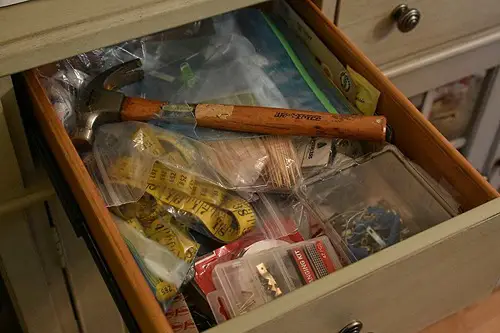
Every Boomer household had that one drawer full of batteries, screws, tape, and tools. It was a symbol of self-reliance—you could fix a loose hinge or reattach a knob without calling anyone. It also reflected a mindset of repair, not replacement. These days, many people don’t even own a basic tool set.
Younger generations are realizing the value of that kind of practical preparedness. YouTube tutorials have become the new DIY manuals, helping them bring the fix-it mentality back. There’s pride in being able to solve a small problem with what you have on hand. The “junk drawer” might just be a metaphor for resourcefulness itself.
10. Hosting Neighbors for Coffee

Boomers didn’t text—they dropped by. Sharing coffee or a slice of pie with neighbors wasn’t a planned event; it was just part of life. That casual hospitality built communities where people actually knew each other. Over time, digital communication replaced face-to-face connection.
Now, many younger people say they feel lonelier despite being constantly “connected.” Some are bringing back small, analog gestures—inviting neighbors for tea, hosting porch chats, or organizing block potlucks. These low-pressure interactions build belonging in ways social media never can. The Boomer coffee ritual wasn’t just about caffeine—it was about kindness.
11. Keeping a Paper Calendar on the Wall
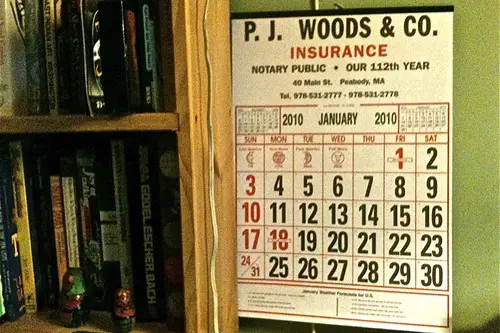
Boomers relied on wall calendars to track birthdays, appointments, and special dates. Families often used them as a shared hub of household information. You could see everyone’s schedule at a glance, usually marked in different colored pens. In the digital age, that central touchpoint disappeared into personal devices.
Younger people miss the visibility and warmth of that family calendar. Some are bringing it back as both decor and organization tool. It’s satisfying to cross off days and physically write plans again. The paper calendar serves as a quiet reminder of structure and togetherness.
12. Listening to Full Albums
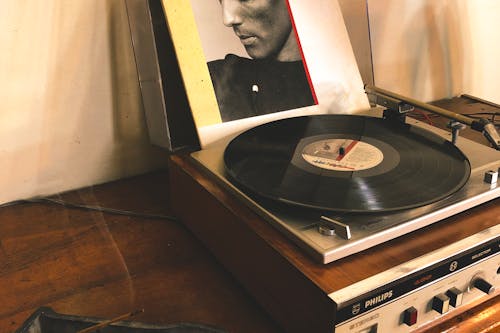
Before playlists and algorithms, Boomers listened to entire albums—side A, then side B. It was a full experience, crafted intentionally by artists to tell a story. You didn’t skip around; you let the music unfold. Streaming culture has made that kind of deep listening rare.
Now, younger music fans are rediscovering vinyl and even cassette tapes. Listening to a record feels immersive and ritualistic, like an act of mindfulness. It forces you to slow down and pay attention. The return of vinyl sales proves the ritual of the album is far from dead.
13. Keeping Houseplants for Care, Not Aesthetics

Boomers didn’t buy plants for “a vibe”—they kept them as living companions. A thriving fern or philodendron was a sign of a nurturing home. Watering, pruning, and repotting were small, meditative acts. Houseplants fell out of style for a while, dismissed as fussy or old-fashioned.
Younger generations have revived the plant trend but for slightly different reasons. Many now recognize that caring for plants improves mood and reduces stress. They’re discovering the same quiet joy Boomers once found in simple daily tending. In a world of instant gratification, growth you can’t rush feels grounding.
14. Watching TV Together—At the Same Time
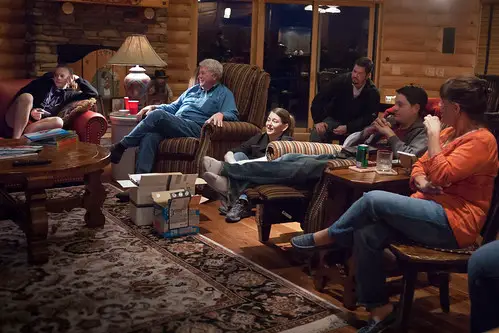
For Boomers, “appointment television” was a shared cultural event. Families gathered at a set time each week to watch shows together, no skipping or streaming. It created communal moments everyone could talk about the next day. Today, everyone watches on their own schedule, often alone.
Younger people miss that collective experience, even if they don’t realize it. Live-tweeting, watch parties, and streaming premieres are modern attempts to recreate it. There’s something special about laughing or gasping in sync with others. The shared ritual of watching together was as important as the show itself.
15. Taking Sunday Drives

Boomers often went for leisurely Sunday drives with no destination in mind. It was a ritual of exploration and relaxation—a way to reconnect and enjoy time together. Gas was cheap, roads were quieter, and the act of driving was part of the fun. Today’s traffic, costs, and schedules have made that tradition nearly vanish.
Yet younger generations are reviving the idea in their own ways. Weekend scenic drives, van life, and road trip culture all echo that same spirit. There’s still something freeing about rolling the windows down and just going. The Sunday drive reminds us that sometimes, the journey really is the point.
This post 15 Everyday Home Rituals That Boomers Abandoned But Younger Generations Secretly Miss was first published on Greenhouse Black.
